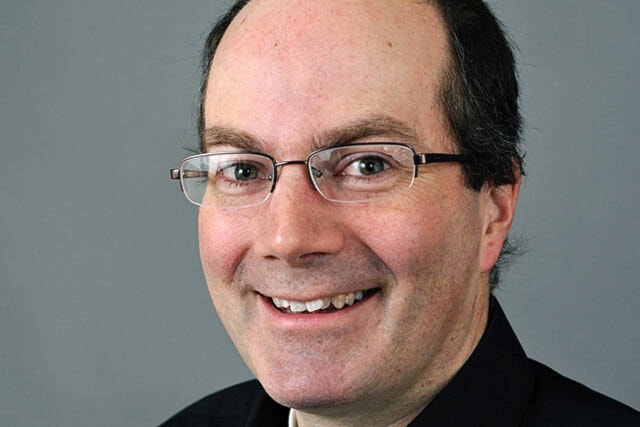Back in science class at FH Collins, I learned about the Cambrian, Triassic and Jurassic periods. But not the Anthropocene epoch. It wasn’t in the textbook, even though it turns out we are living in it.
The Anthropocene takes its name from the Greek word for human, and is increasingly used to refer to the period where Homo sapiens and our technologies have grown powerful enough to shape global biology, chemistry and climate.
Our species is indeed now changing the planet. And unless you want to bet all your marbles, and those of your descendants, on Elon Musk successfully turning us into a two-planet species on Mars, you should be concerned.
Our effect on climate via massive, planet-wide exploitation of fossil fuels is perhaps the best-known human impact. Our current policies put us on track to raise our planet’s average temperature by around 2.4°C. This may not sound like much, but scientists believe that the impacts will be catastrophic. You can expect droughts, killer storms, rising sea levels, wildfires and more. If history is any guide, these natural calamities will feed into social unrest, migration and war.
Here in the Yukon, climate change is already affecting wildfire risk and the glaciers that feed our hydro dams. And we contribute to the problem; a small part of global emissions, but high on a per-person basis.
Unfortunately, climate change is not the only scary thing about the Anthropocene. It turns out we are also messing with other planetary systems, such as the nitrogen cycle and biodiversity.
You probably did learn about the nitrogen cycle in high school. Most of the air we breathe is nitrogen, but in a form not very useful to plants: N2. For millions of years, certain plants have captured this nitrogen from the air and “fixed” it. That is, converted to a form that plants use to grow. Every year, the amount fixed and the amount returned to its N2 form was roughly equal.
Then, in 1913, the Haber-Bosch process was invented. This enabled production of industrial nitrogen fertilizer on a massive scale. According to the Economist, fertilizer production drives around two per cent of all fossil fuel emissions. Without Haber-Bosch, world food production would be 30-50 per cent lower. Probably about a kilo of the nitrogen atoms in your body passed through a Haber-Bosch plant before getting sucked up by a plant you later ate.
Like burning fossil fuels, this has planetary side effects. Nitrogen dioxide also warms the climate. Excess fertilizer runoff causes dead zones in rivers and lakes.
Yukoners contribute to nitrogen over-use indirectly, every time we eat — or waste — industrially grown food.
Biodiversity is also under threat in the Anthropocene. Biologists say we are living through the sixth mass extinction. In addition to charismatic megafauna such as the polar bear, thousands of lesser known species are also at risk. Instead of the meteor that did in the dinosaurs, however, this time the causes are human: climate change, nitrogen dead zones, industrial pollution and clearing land for farms and cities.
The Yukon is a biodiversity refuge. In United Nations statistics, countries such as France report higher levels of land protection than the Yukon. But, in practice, far more of the Yukon’s land is undeveloped.
Living in the Anthropocene poses difficult moral issues. How much does today’s Yukon consumer, for example, owe the polar bear or future generations who may live on a degraded planet?
Author Jared Diamond once speculated on why aliens seem never to visit us. One explanation is that, in order to become an advanced space-traveling civilization, they would have had to successfully pass through their versions of climate change, genetically modified pathogens and nuclear weapons. Maybe, so far, no one has made it.
Our species is starting to tackle these issues. We have global treaties tackling climate change and, updated recently in Montreal, biodiversity. Countries such as the Netherlands are taking increasingly stringent action on nitrogen.
There is greater political acceptance of the need for action. Back in the early 2000s, Premier Pat Duncan faced stiff public resistance over the Yukon Protected Areas Strategy. Now, the announcement before the holidays that the Yukon would seek to protect 30 percent of its landmass — one of the flagship commitments in the new global biodiversity pact — passed almost without notice.
But progress is slow. Since the signing of the climate-change treaty in 1992, human-emitted carbon in the atmosphere has not gone down. It has doubled. The nitrogen restrictions in the Netherlands face massive pushback from Dutch farmers, who blocked freeways for days with their tractors. The biodiversity commitments made in Montreal are landmarks, but there are big questions about how rigorously the 190 countries will implement them.
The Yukon committing to protect 30 percent of its land is good. But that was relatively easy compared to the trade-offs faced by more densely populated countries or communities in the Amazon or Indonesian rainforest that do not have a billion-dollar transfer payment to offset lost jobs. Our protected land is mostly uninhabited and with no major industrial projects planned.
We can expect to be asked to do more in the 2020s as the impacts of the Anthropocene epoch become more obvious. This will include more serious action on carbon emissions, managing nitrogen and food waste, and making meaningful financial contributions to those Amazonian and Indonesian communities struggling to adapt.
Keith Halliday is a Yukon economist, author of the Aurore of the Yukon youth adventure novels and co-host of the Klondike Gold Rush History podcast. He won the 2022 Canadian Community Newspaper Award for Outstanding Columnist.
